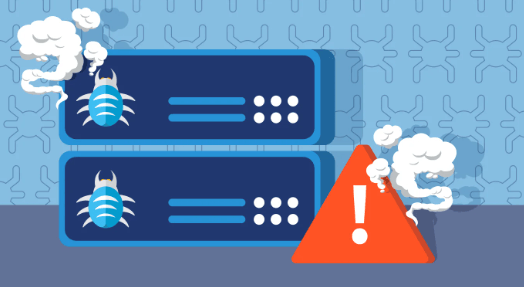Post Preview
In the interconnected world of cyberspace, the specter of Denial of Service (DoS) and Distributed Denial of Service (DDoS) attacks looms ominously, capable of wreaking havoc on digital landscapes. These malicious assaults, though distinct in their methodologies, share a common objective: to disrupt the normal functioning of networks, services, or websites, causing denial of access to legitimate users. Understanding the effects of these attacks is essential for fortifying digital defenses and mitigating their impact.
A severe DDoS attack can cause your site to be unavailable to customers. That can result in a loss of revenue for eCommerce sites or other businesses that depend on website functionality.
DDoS attacks work by overwhelming a service’s network resources. Volume-based attacks and logical or programming vulnerabilities can cause this.
Loss of Data
Many people associate DDoS attacks with nefarious, dark-hooded individuals and are surprised to learn that they can also impact organizations, government agencies, and private individuals. From disrupted customer transactions to lost revenue to mitigating and responding to an attack, the cost of a DDoS event can be significant.
DDoS events are brought about when a service’s underlying systems are overloaded. To understand how this works, imagine you visiting a shopping website. Your requests are sent from your browser to the site’s server, then to a network exchange and various other networks and Internet providers. If enough of these systems are overloaded, the site becomes unavailable.
When attackers want to create a DDoS, they recruit a cyber army of compromised devices or bots. These include laptops and desktop computers, mobile phones, and IoT devices. These devices often have malware installed, allowing attackers to control them remotely. These are then used to send illegitimate traffic to the target website or server, overloading their resources and rendering them unusable.
Between DOS vs DDOS attacks, a DDoS can be more difficult to mitigate than a standard DoS because it uses thousands or millions of devices, making the attack more challenging. These devices are often recruited from the “wild” and include personal computers, IoT devices, and even home routers.
Loss of Customer Trust
Attacks like these damage a company’s reputation and make customers think twice about doing business with the attacked organization or putting their personal information in its care. They also can erode customer trust, which can be costly to rebuild.
A DDoS attack uses a network of compromised computers, called a botnet, to assail an agency with Internet traffic, making it more difficult to block than a DoS attack, which relies on a single computer to launch the attack. Additionally, DDoS attacks can use decoys in the botnet to mask the trustworthy source of the attack.
How the attack works also makes it more difficult to track the attacker. Usually, a DoS assault originates from a single point, making it simple to locate and neutralize. In contrast, a DDoS attack may appear to come from multiple locations, making stopping more difficult.
A successful DDoS attack can last days or longer, wreaking havoc on an agency’s operations. Employees can’t access critical systems and collaborate effectively, which erodes productivity. In addition, customers can’t use online services, creating frustration and damaging a brand’s image. As a result, companies suffering from DDoS attacks often lose revenue and may find it challenging to recover. They also can face legal action by customers and other parties.
Loss of Revenue
DoS and DDoS attacks are designed to bring down web servers and halt business. Revenue loss may result from regular clients using other services while the problem is fixed. It can also lead to a drop in search rankings, making it difficult for your customers to find you.
A DoS attack typically involves high volumes of traffic sent to a website or server that overwhelms its capacity to handle the volume, leading to an outage or degradation of service. The attacks are incredibly sophisticated, often using a botnet of compromised devices to generate illegitimate traffic and evade detection.
The attacks may be aimed at the infrastructure of networks, such as the network devices that establish the internet connection, or they can target application layers of sites and services like email, social media, and gaming. The scale of the attacks has grown over time, with some aiming for terabytes of data per second.
Loss of Business
Attackers typically use botnets, which consist of compromised swarms of Internet of Things (IoT) devices, to perform DDoS attacks.
The most common motives for DDoS attacks are financial and malicious. Hackers sometimes extort money by threatening to take down a company’s site unless the victim pays them a ransom. Malicious competitors will also carry out DDoS attacks to steal customers from each other. And hacktivists will put government and enterprise sites offline as a protest for political reasons.
Other expenses include IT support and staffing, remediation efforts, and customer compensation. DDoS attacks can be especially devastating for businesses that operate e-commerce sites and other digital services. These businesses depend on a smooth user experience to bring in revenue, and when their site is taken down, that revenue is lost.

